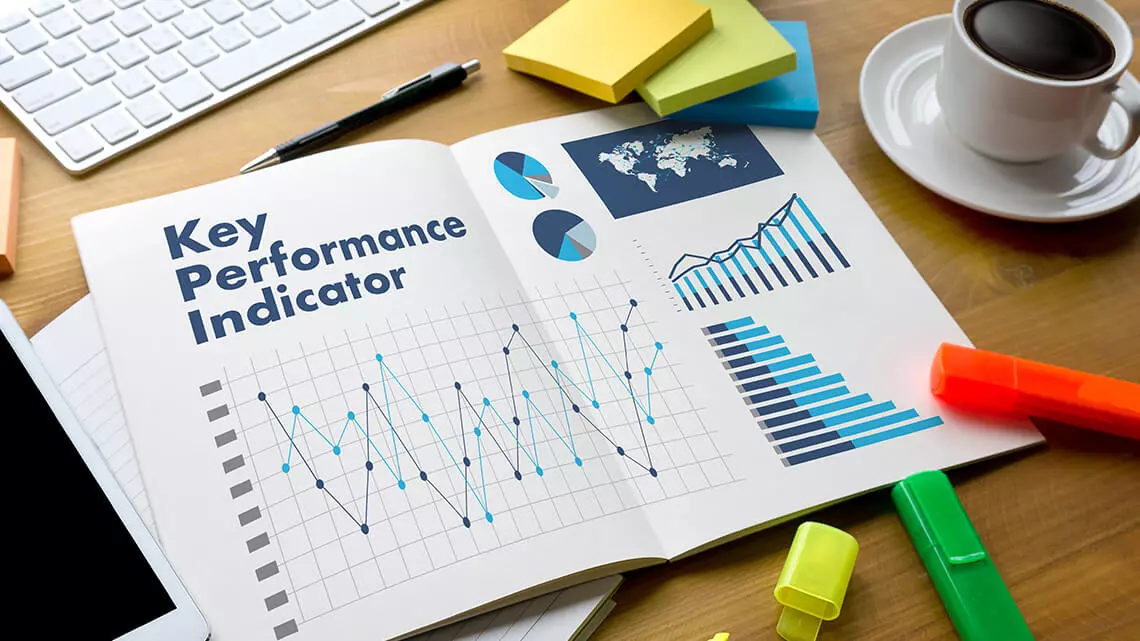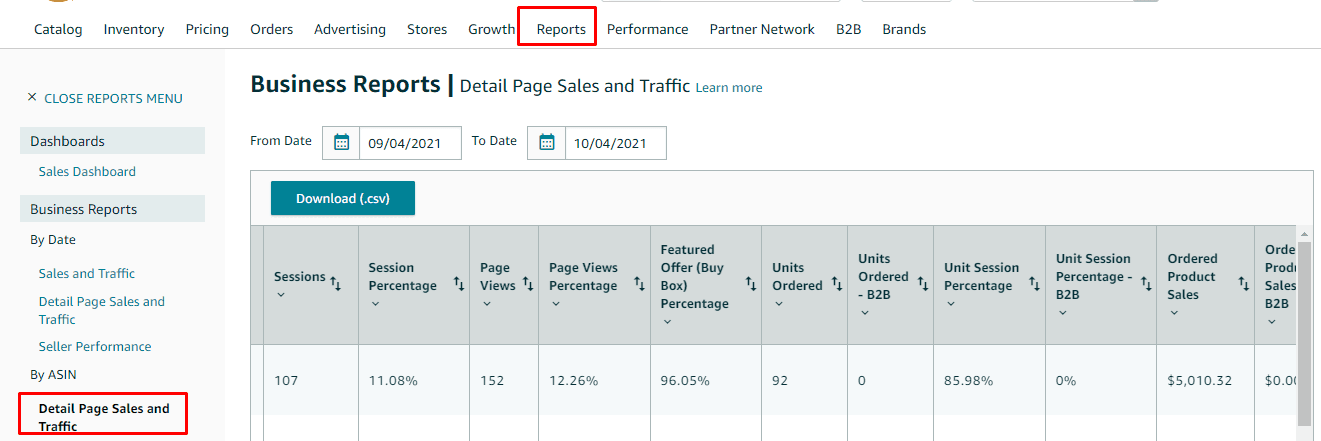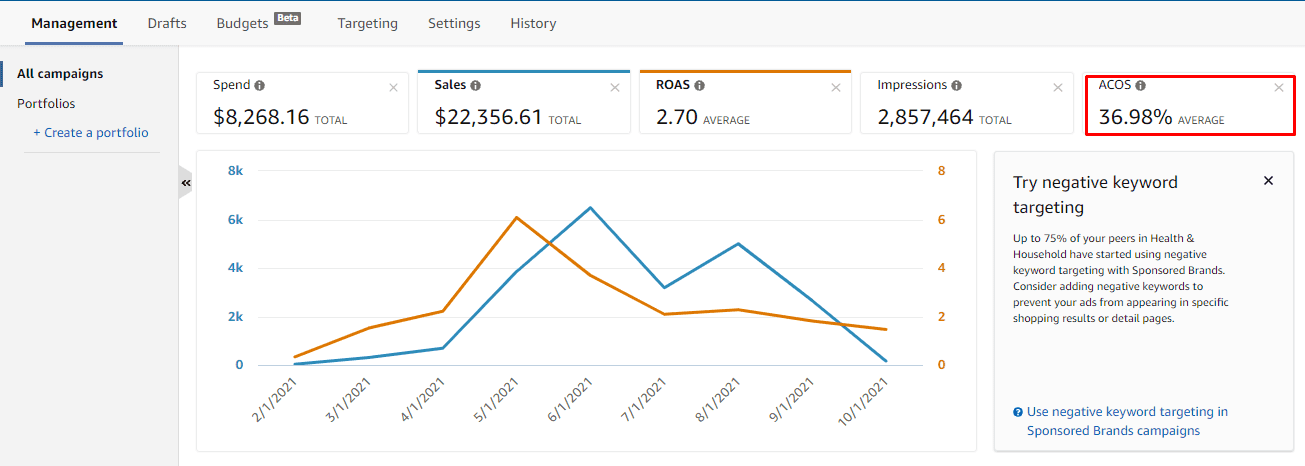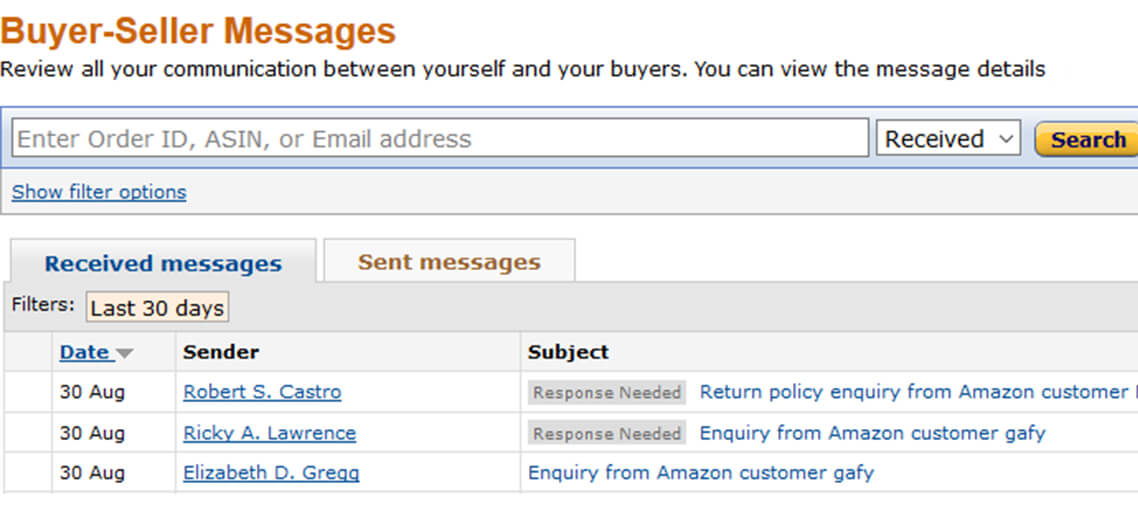Back to Page
Amazon Selling Tips
11 Amazon Seller Metrics To Watch Out For
11 Amazon Seller Metrics To Watch Out For


Back to Page
Amazon Selling Tips
11 Amazon Seller Metrics To Watch Out For


Keeping track of hundreds and thousands of metrics in your seller central account can be overwhelming. Our blog post will tell you which metrics you should be focusing on and how you can stay on top of them.
#1: Buy box eligibility

When more than one seller is selling the same product, only one can have the buy box. To make it simple, buy box is like having your shop in a prime location on a busy street corner. In short, no matter how many customers you bring to your detail page, no buy box = no sales. Buy box eligibility mainly depends on the price of the product. The seller with the lowest price wins the buy box. But the buy box algorithm also takes into account a few other Amazon metrics:
Order Defect Rate (ODR). Keep your Order Defect Rate under 1%
Inventory availability. Always stay in stock
Customer feedback and customer response time
Fulfillment method. If you choose FBA, you’re increasing your chances of winning the buy box
To check your buy box eligibility, go to your Manage Inventory page, select Preferences, select buy box eligible, and click on Save Changes.
#2: Seller Feedback

Sellers put a lot of effort and time into maintaining the integrity of their customer reviews, but couldn’t care less about seller feedback. Although the words seller feedback and customer reviews are often used interchangeably, they are very different. Customer reviews are all about your products and seller feedback is your report card as a seller. Another difference is that a negative seller feedback rate of over 25% can put your account at risk of suspension.
If you are successfully able to maintain a positive seller feedback rate of 95-99%, you can secure the buy box and ensure more sales. Offering fast shipping, excellent after-sale customer service, and better quality packaging are some of the ways to improve and increase your seller feedback.
Know more about seller feedback here: Amazon Seller Feedback Guide 2021
#3: Product ranking

Your product ranking tells you where your listing appears in the Amazon SERPs. About 70% of the shoppers don’t go past the first page. To get your listing in front of as many shoppers as possible, you need to make sure your product ranks on page #1. There are many ways to improve your product ranking, two of the most commonly used is: product listing optimization and PPC. Product listing optimization can help you improve your organic ranking in the long term, while PPC can give you an instant boost in visibility and help you rank on page #1 real quickly. Both are important but your advertising efforts should have a snowball effect, gradually, it should lead to an increase in organic ranking and sales.
#4: Conversion rate

The conversion rate shows the percentage of visitors that converted into customers. A poor conversion rate indicates a problem with your product detail page. The factors that directly affect your conversion rates are:
Images: 9 high quality, professionally created white background images, Amazon infographic images, lifestyles, and more.
Copy: Conversion striking, informative copy that gives the customers all the information they need to make a purchase.
Reviews: 30+ 4.5 or 5 star ratings.
Price
Buy box
While assessing your conversion rates, it is also necessary to look into your sessions. A session refers to the number of visits to a page by unique visitors. You can find both conversion rate and sessions in the Detail Page, Sales, and Traffic section of your business reports dashboard.
#5: PPC Metrics: ACOS & TACOS

Every Amazon seller uses PPC to get an instant boost in sales. If you have looked at the campaigns manager, you’ll find various metrics like CTR (click through rates), conversion rates, impressions, clicks, sales, and more. Out of these, two metrics are most important: ACOS & TACOS.
Your Advertising Cost Of Sales (ACOS) tells you how much money you have spent on an ad compared to how much you have earned from it. The formula for ACOS: Ad spend ÷ sales earned from ads. The lower your ACOS, the more profitable your campaigns.
TACoS measures your ad spend against all of your Amazon sales (organic + sponsored). TACOS gives sellers a holistic view of the relation between total sales and total ad spend. It helps you measure the effectiveness of advertising in the long term growth of your brand and also shows how much your business is relying on advertising. The basic formula for TACoS is as follows: TACOS = (Advertising Spend / Total Revenue) x 100. Just like ACOS, the lower your TACoS is, the better.
TACOS & ACOS ScenarioWhat Does It Mean?TACOS is flat organic sales is increasingTACOS is falling ↓Organic sales is increasingTACOS is rising ↑ and ACOS is falling ↓Organic sales are reducingTACOS is rising ↑ and ACOS is rising ↑Organic sales are reducingACOS and TACOS both are rising ↑Acceptable if your product is new
#6: Buyer-Seller Contact Response Time (CRT)

Buyer-Seller Contact Response Time shows how responsive you are when answering messages from customers. Amazon expects you to reply to buyer messages in 24 hours, no matter what day of the week it is. If you are consistently unresponsive, your account metrics will suffer so checking your buyer-seller messaging section is vital to keeping your shoppers & Amazon happy. If you find yourself too busy to look after buyer seller messages, hire an Amazon seller consultant who can do that for you.
#7: Order Defect Ratio (ODR) (<1%)
Order defect rate (ODR) represents the percentage of orders that get negative customer feedback. Amazon calculates this percentage based on the number of negative feedback, A-Z claims (unsatisfactory/late orders), and credit card chargebacks. These numbers are combined and divided by the total number of orders received over the last 60 days. According to Amazon, sellers must maintain ODR below 1% or else you can say goodbye to your beloved Buy Box.
The best way to address ODR issues is by streamlining the fulfillment process and offering Prime Shipping. You can view your ODR through Performance > Account Health.
#8: Late Shipment Rate (<4%)
Have you ever been eagerly waiting for a parcel, only to find out that the shipping has been delayed? Nothing frustrated a customer more than delayed shipments. Amazon is well known for its super-fast, on-time shipping policy, and late shipments poorly reflect your business standards. This is not the picture you want to paint of yourself, especially in front of Amazon or your paying customers.
When an order is confirmed to be overdue for three or more days, it is considered to be late. Sellers are therefore encouraged to maintain a late shipment rate of <4%. You must meet the target threshold. Failing to do so can get your account penalized, suspended, or even removed.
Late shipment rate formula:
Number of overdue orders (exceeding two days) ÷ total number of orders in a given timeframe
Note: Late shipment rates apply to only seller fulfilled orders.
#9: Pre-Fulfillment Cancellation Rate (<2.5%)
Your pre-fulfillment cancellation rate should be less than 2.5%. But what is the pre-fulfillment cancellation rate? It is the percentage of seller-initiated order cancellations before the order is shipped. The PFC rate is calculated by dividing the total number of order cancellations (before shipping confirmations) by the number of total orders. Poor inventory management is most often the result of high pre-fulfillment cancellation rates. Failing to meet the criteria for pre-fulfillment cancellation rate can also lead to account suspension.
Note: Pre-fulfillment cancellation rates apply to only seller fulfilled orders.
#10: Inventory Performance Index (IPI) (>450)

Maintaining your IPI score is vital to avoid out-of-stock situations. IPI score is a number from 0-1000 that tells you how efficient you are at managing your inventory. To see your IPI score, go to the Inventory Performance Dashboard where you’ll see a performance bar showing four categories:
Dark green = Excellent
Green = Good
Yellow = Fair
Red = Poor
Stay on the right side of the bar and Amazon will reward you with unlimited storage and a low IPI score can put you at risk of storage limitations. According to Amazon, “An IPI score above 450 means your FBA inventory is performing well, and a score above 550 indicates your inventory is a top performer.” If your score is below 350, you may be subject to storage fees or storage limitations.
Although the actual formula for determining the IPI score has not been disclosed by Amazon, here are the factors that affect your IPI score:
Excess inventory: Avoid excess and aged inventory. A good guideline is to maintain enough inventory to cover 30 to 60 days of your expected sales.
Sell-through rate: Improve your 90-day rolling sell-through by maintaining the right balance of inventory over the same period.
Stranded inventory: Ensure that your inventory is buyable and fix listings that are stranded.
In-stock inventory: Increase sales by keeping popular items in stock.
#11: IP Complaints
Amazon does not allow listings that violate the intellectual property rights of brands or other rights owners. If someone has reported an infringement against your listing, it must be immediately resolved. You can find IP complaints on the Account Health page right next to Customer Service Performance. You can see how many intellectual property violations are currently affecting your overall account health. If ignored, these violations can also lead to detail page removal or account suspension.
Just ensure these metrics are in order and chances are you’re on the right track
Big sale days like Black Friday & Thanksgiving are around the corner and it is essential that you maintain your account health by staying on top of these performance metrics. If you already have enough things to worry about, let our Amazon consultants take care of your seller metrics, even when you’re asleep.

Keeping track of hundreds and thousands of metrics in your seller central account can be overwhelming. Our blog post will tell you which metrics you should be focusing on and how you can stay on top of them.
#1: Buy box eligibility

When more than one seller is selling the same product, only one can have the buy box. To make it simple, buy box is like having your shop in a prime location on a busy street corner. In short, no matter how many customers you bring to your detail page, no buy box = no sales. Buy box eligibility mainly depends on the price of the product. The seller with the lowest price wins the buy box. But the buy box algorithm also takes into account a few other Amazon metrics:
Order Defect Rate (ODR). Keep your Order Defect Rate under 1%
Inventory availability. Always stay in stock
Customer feedback and customer response time
Fulfillment method. If you choose FBA, you’re increasing your chances of winning the buy box
To check your buy box eligibility, go to your Manage Inventory page, select Preferences, select buy box eligible, and click on Save Changes.
#2: Seller Feedback

Sellers put a lot of effort and time into maintaining the integrity of their customer reviews, but couldn’t care less about seller feedback. Although the words seller feedback and customer reviews are often used interchangeably, they are very different. Customer reviews are all about your products and seller feedback is your report card as a seller. Another difference is that a negative seller feedback rate of over 25% can put your account at risk of suspension.
If you are successfully able to maintain a positive seller feedback rate of 95-99%, you can secure the buy box and ensure more sales. Offering fast shipping, excellent after-sale customer service, and better quality packaging are some of the ways to improve and increase your seller feedback.
Know more about seller feedback here: Amazon Seller Feedback Guide 2021
#3: Product ranking

Your product ranking tells you where your listing appears in the Amazon SERPs. About 70% of the shoppers don’t go past the first page. To get your listing in front of as many shoppers as possible, you need to make sure your product ranks on page #1. There are many ways to improve your product ranking, two of the most commonly used is: product listing optimization and PPC. Product listing optimization can help you improve your organic ranking in the long term, while PPC can give you an instant boost in visibility and help you rank on page #1 real quickly. Both are important but your advertising efforts should have a snowball effect, gradually, it should lead to an increase in organic ranking and sales.
#4: Conversion rate

The conversion rate shows the percentage of visitors that converted into customers. A poor conversion rate indicates a problem with your product detail page. The factors that directly affect your conversion rates are:
Images: 9 high quality, professionally created white background images, Amazon infographic images, lifestyles, and more.
Copy: Conversion striking, informative copy that gives the customers all the information they need to make a purchase.
Reviews: 30+ 4.5 or 5 star ratings.
Price
Buy box
While assessing your conversion rates, it is also necessary to look into your sessions. A session refers to the number of visits to a page by unique visitors. You can find both conversion rate and sessions in the Detail Page, Sales, and Traffic section of your business reports dashboard.
#5: PPC Metrics: ACOS & TACOS

Every Amazon seller uses PPC to get an instant boost in sales. If you have looked at the campaigns manager, you’ll find various metrics like CTR (click through rates), conversion rates, impressions, clicks, sales, and more. Out of these, two metrics are most important: ACOS & TACOS.
Your Advertising Cost Of Sales (ACOS) tells you how much money you have spent on an ad compared to how much you have earned from it. The formula for ACOS: Ad spend ÷ sales earned from ads. The lower your ACOS, the more profitable your campaigns.
TACoS measures your ad spend against all of your Amazon sales (organic + sponsored). TACOS gives sellers a holistic view of the relation between total sales and total ad spend. It helps you measure the effectiveness of advertising in the long term growth of your brand and also shows how much your business is relying on advertising. The basic formula for TACoS is as follows: TACOS = (Advertising Spend / Total Revenue) x 100. Just like ACOS, the lower your TACoS is, the better.
TACOS & ACOS ScenarioWhat Does It Mean?TACOS is flat organic sales is increasingTACOS is falling ↓Organic sales is increasingTACOS is rising ↑ and ACOS is falling ↓Organic sales are reducingTACOS is rising ↑ and ACOS is rising ↑Organic sales are reducingACOS and TACOS both are rising ↑Acceptable if your product is new
#6: Buyer-Seller Contact Response Time (CRT)

Buyer-Seller Contact Response Time shows how responsive you are when answering messages from customers. Amazon expects you to reply to buyer messages in 24 hours, no matter what day of the week it is. If you are consistently unresponsive, your account metrics will suffer so checking your buyer-seller messaging section is vital to keeping your shoppers & Amazon happy. If you find yourself too busy to look after buyer seller messages, hire an Amazon seller consultant who can do that for you.
#7: Order Defect Ratio (ODR) (<1%)
Order defect rate (ODR) represents the percentage of orders that get negative customer feedback. Amazon calculates this percentage based on the number of negative feedback, A-Z claims (unsatisfactory/late orders), and credit card chargebacks. These numbers are combined and divided by the total number of orders received over the last 60 days. According to Amazon, sellers must maintain ODR below 1% or else you can say goodbye to your beloved Buy Box.
The best way to address ODR issues is by streamlining the fulfillment process and offering Prime Shipping. You can view your ODR through Performance > Account Health.
#8: Late Shipment Rate (<4%)
Have you ever been eagerly waiting for a parcel, only to find out that the shipping has been delayed? Nothing frustrated a customer more than delayed shipments. Amazon is well known for its super-fast, on-time shipping policy, and late shipments poorly reflect your business standards. This is not the picture you want to paint of yourself, especially in front of Amazon or your paying customers.
When an order is confirmed to be overdue for three or more days, it is considered to be late. Sellers are therefore encouraged to maintain a late shipment rate of <4%. You must meet the target threshold. Failing to do so can get your account penalized, suspended, or even removed.
Late shipment rate formula:
Number of overdue orders (exceeding two days) ÷ total number of orders in a given timeframe
Note: Late shipment rates apply to only seller fulfilled orders.
#9: Pre-Fulfillment Cancellation Rate (<2.5%)
Your pre-fulfillment cancellation rate should be less than 2.5%. But what is the pre-fulfillment cancellation rate? It is the percentage of seller-initiated order cancellations before the order is shipped. The PFC rate is calculated by dividing the total number of order cancellations (before shipping confirmations) by the number of total orders. Poor inventory management is most often the result of high pre-fulfillment cancellation rates. Failing to meet the criteria for pre-fulfillment cancellation rate can also lead to account suspension.
Note: Pre-fulfillment cancellation rates apply to only seller fulfilled orders.
#10: Inventory Performance Index (IPI) (>450)

Maintaining your IPI score is vital to avoid out-of-stock situations. IPI score is a number from 0-1000 that tells you how efficient you are at managing your inventory. To see your IPI score, go to the Inventory Performance Dashboard where you’ll see a performance bar showing four categories:
Dark green = Excellent
Green = Good
Yellow = Fair
Red = Poor
Stay on the right side of the bar and Amazon will reward you with unlimited storage and a low IPI score can put you at risk of storage limitations. According to Amazon, “An IPI score above 450 means your FBA inventory is performing well, and a score above 550 indicates your inventory is a top performer.” If your score is below 350, you may be subject to storage fees or storage limitations.
Although the actual formula for determining the IPI score has not been disclosed by Amazon, here are the factors that affect your IPI score:
Excess inventory: Avoid excess and aged inventory. A good guideline is to maintain enough inventory to cover 30 to 60 days of your expected sales.
Sell-through rate: Improve your 90-day rolling sell-through by maintaining the right balance of inventory over the same period.
Stranded inventory: Ensure that your inventory is buyable and fix listings that are stranded.
In-stock inventory: Increase sales by keeping popular items in stock.
#11: IP Complaints
Amazon does not allow listings that violate the intellectual property rights of brands or other rights owners. If someone has reported an infringement against your listing, it must be immediately resolved. You can find IP complaints on the Account Health page right next to Customer Service Performance. You can see how many intellectual property violations are currently affecting your overall account health. If ignored, these violations can also lead to detail page removal or account suspension.
Just ensure these metrics are in order and chances are you’re on the right track
Big sale days like Black Friday & Thanksgiving are around the corner and it is essential that you maintain your account health by staying on top of these performance metrics. If you already have enough things to worry about, let our Amazon consultants take care of your seller metrics, even when you’re asleep.

Keeping track of hundreds and thousands of metrics in your seller central account can be overwhelming. Our blog post will tell you which metrics you should be focusing on and how you can stay on top of them.
#1: Buy box eligibility

When more than one seller is selling the same product, only one can have the buy box. To make it simple, buy box is like having your shop in a prime location on a busy street corner. In short, no matter how many customers you bring to your detail page, no buy box = no sales. Buy box eligibility mainly depends on the price of the product. The seller with the lowest price wins the buy box. But the buy box algorithm also takes into account a few other Amazon metrics:
Order Defect Rate (ODR). Keep your Order Defect Rate under 1%
Inventory availability. Always stay in stock
Customer feedback and customer response time
Fulfillment method. If you choose FBA, you’re increasing your chances of winning the buy box
To check your buy box eligibility, go to your Manage Inventory page, select Preferences, select buy box eligible, and click on Save Changes.
#2: Seller Feedback

Sellers put a lot of effort and time into maintaining the integrity of their customer reviews, but couldn’t care less about seller feedback. Although the words seller feedback and customer reviews are often used interchangeably, they are very different. Customer reviews are all about your products and seller feedback is your report card as a seller. Another difference is that a negative seller feedback rate of over 25% can put your account at risk of suspension.
If you are successfully able to maintain a positive seller feedback rate of 95-99%, you can secure the buy box and ensure more sales. Offering fast shipping, excellent after-sale customer service, and better quality packaging are some of the ways to improve and increase your seller feedback.
Know more about seller feedback here: Amazon Seller Feedback Guide 2021
#3: Product ranking

Your product ranking tells you where your listing appears in the Amazon SERPs. About 70% of the shoppers don’t go past the first page. To get your listing in front of as many shoppers as possible, you need to make sure your product ranks on page #1. There are many ways to improve your product ranking, two of the most commonly used is: product listing optimization and PPC. Product listing optimization can help you improve your organic ranking in the long term, while PPC can give you an instant boost in visibility and help you rank on page #1 real quickly. Both are important but your advertising efforts should have a snowball effect, gradually, it should lead to an increase in organic ranking and sales.
#4: Conversion rate

The conversion rate shows the percentage of visitors that converted into customers. A poor conversion rate indicates a problem with your product detail page. The factors that directly affect your conversion rates are:
Images: 9 high quality, professionally created white background images, Amazon infographic images, lifestyles, and more.
Copy: Conversion striking, informative copy that gives the customers all the information they need to make a purchase.
Reviews: 30+ 4.5 or 5 star ratings.
Price
Buy box
While assessing your conversion rates, it is also necessary to look into your sessions. A session refers to the number of visits to a page by unique visitors. You can find both conversion rate and sessions in the Detail Page, Sales, and Traffic section of your business reports dashboard.
#5: PPC Metrics: ACOS & TACOS

Every Amazon seller uses PPC to get an instant boost in sales. If you have looked at the campaigns manager, you’ll find various metrics like CTR (click through rates), conversion rates, impressions, clicks, sales, and more. Out of these, two metrics are most important: ACOS & TACOS.
Your Advertising Cost Of Sales (ACOS) tells you how much money you have spent on an ad compared to how much you have earned from it. The formula for ACOS: Ad spend ÷ sales earned from ads. The lower your ACOS, the more profitable your campaigns.
TACoS measures your ad spend against all of your Amazon sales (organic + sponsored). TACOS gives sellers a holistic view of the relation between total sales and total ad spend. It helps you measure the effectiveness of advertising in the long term growth of your brand and also shows how much your business is relying on advertising. The basic formula for TACoS is as follows: TACOS = (Advertising Spend / Total Revenue) x 100. Just like ACOS, the lower your TACoS is, the better.
TACOS & ACOS ScenarioWhat Does It Mean?TACOS is flat organic sales is increasingTACOS is falling ↓Organic sales is increasingTACOS is rising ↑ and ACOS is falling ↓Organic sales are reducingTACOS is rising ↑ and ACOS is rising ↑Organic sales are reducingACOS and TACOS both are rising ↑Acceptable if your product is new
#6: Buyer-Seller Contact Response Time (CRT)

Buyer-Seller Contact Response Time shows how responsive you are when answering messages from customers. Amazon expects you to reply to buyer messages in 24 hours, no matter what day of the week it is. If you are consistently unresponsive, your account metrics will suffer so checking your buyer-seller messaging section is vital to keeping your shoppers & Amazon happy. If you find yourself too busy to look after buyer seller messages, hire an Amazon seller consultant who can do that for you.
#7: Order Defect Ratio (ODR) (<1%)
Order defect rate (ODR) represents the percentage of orders that get negative customer feedback. Amazon calculates this percentage based on the number of negative feedback, A-Z claims (unsatisfactory/late orders), and credit card chargebacks. These numbers are combined and divided by the total number of orders received over the last 60 days. According to Amazon, sellers must maintain ODR below 1% or else you can say goodbye to your beloved Buy Box.
The best way to address ODR issues is by streamlining the fulfillment process and offering Prime Shipping. You can view your ODR through Performance > Account Health.
#8: Late Shipment Rate (<4%)
Have you ever been eagerly waiting for a parcel, only to find out that the shipping has been delayed? Nothing frustrated a customer more than delayed shipments. Amazon is well known for its super-fast, on-time shipping policy, and late shipments poorly reflect your business standards. This is not the picture you want to paint of yourself, especially in front of Amazon or your paying customers.
When an order is confirmed to be overdue for three or more days, it is considered to be late. Sellers are therefore encouraged to maintain a late shipment rate of <4%. You must meet the target threshold. Failing to do so can get your account penalized, suspended, or even removed.
Late shipment rate formula:
Number of overdue orders (exceeding two days) ÷ total number of orders in a given timeframe
Note: Late shipment rates apply to only seller fulfilled orders.
#9: Pre-Fulfillment Cancellation Rate (<2.5%)
Your pre-fulfillment cancellation rate should be less than 2.5%. But what is the pre-fulfillment cancellation rate? It is the percentage of seller-initiated order cancellations before the order is shipped. The PFC rate is calculated by dividing the total number of order cancellations (before shipping confirmations) by the number of total orders. Poor inventory management is most often the result of high pre-fulfillment cancellation rates. Failing to meet the criteria for pre-fulfillment cancellation rate can also lead to account suspension.
Note: Pre-fulfillment cancellation rates apply to only seller fulfilled orders.
#10: Inventory Performance Index (IPI) (>450)

Maintaining your IPI score is vital to avoid out-of-stock situations. IPI score is a number from 0-1000 that tells you how efficient you are at managing your inventory. To see your IPI score, go to the Inventory Performance Dashboard where you’ll see a performance bar showing four categories:
Dark green = Excellent
Green = Good
Yellow = Fair
Red = Poor
Stay on the right side of the bar and Amazon will reward you with unlimited storage and a low IPI score can put you at risk of storage limitations. According to Amazon, “An IPI score above 450 means your FBA inventory is performing well, and a score above 550 indicates your inventory is a top performer.” If your score is below 350, you may be subject to storage fees or storage limitations.
Although the actual formula for determining the IPI score has not been disclosed by Amazon, here are the factors that affect your IPI score:
Excess inventory: Avoid excess and aged inventory. A good guideline is to maintain enough inventory to cover 30 to 60 days of your expected sales.
Sell-through rate: Improve your 90-day rolling sell-through by maintaining the right balance of inventory over the same period.
Stranded inventory: Ensure that your inventory is buyable and fix listings that are stranded.
In-stock inventory: Increase sales by keeping popular items in stock.
#11: IP Complaints
Amazon does not allow listings that violate the intellectual property rights of brands or other rights owners. If someone has reported an infringement against your listing, it must be immediately resolved. You can find IP complaints on the Account Health page right next to Customer Service Performance. You can see how many intellectual property violations are currently affecting your overall account health. If ignored, these violations can also lead to detail page removal or account suspension.
Just ensure these metrics are in order and chances are you’re on the right track
Big sale days like Black Friday & Thanksgiving are around the corner and it is essential that you maintain your account health by staying on top of these performance metrics. If you already have enough things to worry about, let our Amazon consultants take care of your seller metrics, even when you’re asleep.









